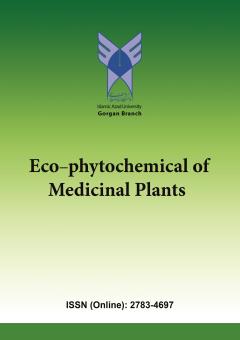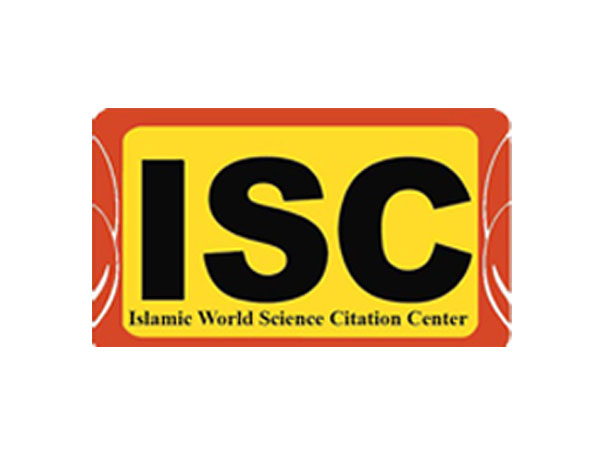About the journal
Based on the Journal Rank Verification Act of Ministry of Science, Research and Technology the Ecophytochemistry journal of Medicinal Plants, issued by Gorgan Branch, Islamic Azad University, was Ranked as a Scientific Research Journal by the Policy Making and Curriculum Planning Office as well as by Academic Journals Commission in their Meeting held on March 12th,2014.
According to the 25685-11 Act issued April 29th, 2019 by the Ministry of Research and Technology, all journals already classified as “Science and Research” and “Science Periodical” will be referred to as Scientific Journals.
About the Ecophytochemistry journal of Medicinal Plants
- Country of Publication: Iran
- Publisher: Islamic Azad University-Gorgan Branch
- Printing status: print and electronic
- Print ISSN: 2322-3235
- E- ISSN:2783-4697
- Printing Occasions: Quarterly
- Access: Free and free download of articles
- Journal Language: Farsi (English Abstract)
- Specialty: Ecophytochemical of Medicinal Plants
- Journal Type: Scientific; Research
- Type of arbitration: Unnamed arbitration and at least 2 arbitrators
- Arbitration time: 2 to 4 months
- Review Time: One week
- Signature Method: APA Citation Format 20th edition
- Journal Email: echophytochemical@gorganiau.ac.ir
- Alternate E-mail: eco.phytochemistry.research@gmail.com
- Impact Factor in 2021: 0.098
- The rank in Islamic World Science Citation Center (ISC) in 2020:(ٍEngineering) Q3
- There is a publishing cost
- Registration link
This publication reviews the plagiarism.![]()
![]()
Indexing & Abstracting: CABI, ROAD - ISSN, ISSN Portal, Islamic World Science Citation Center (ISC), National Digital Archives of Iranian Scholarly Journals, Civilica, Google Scholar, Academia, LinkedIn, Publons, etc.
COPE: The Ecophytochemistry journal of Medicinal Plants, follows the policies and guidelines of the Committee on Publication Ethics (COPE) and abides by its Code of Conduct in dealing with potential cases of misconduct.
Copyright: Authors retain unrestricted copyrights and publishing rights.
Type of License: Creative Commons — Attribution-NonCommercial 4.0 International (CC BY-NC 4.0)
Dear Researcher,
According to the Circular number 50260/S dated 2024/10/08, the authors are required to pay a nonrefundable review fee of 5000000 Rials after the initial verification of the manuscript by the editor-in-chief and a nonrefundable publication fee of 10000000 Rials after it is accepted for publication. Account Number: 27010000004363; Digit: 6037691990456782 Bank Saderat Iran.
Address: Office of the Ecophytochemistry journal of Medicinal Plants, Islamic Azad University-Gorgan Branch, Shahid Kalantari Blvd., Daneshjoo St., Gorgan, Iran. Postal Code: 4914739975.
-
Open Access Article
1 - Analysis of Enzymatic Activities, Antioxidant Potential, and Essential Oil Content of Different Artemisia Species During Various Growth Stages
Zeinab Zeinali ، Alireza Ladan Moghadam * ، معصومه مازندرانی ، Khodayar HematiIssue 2 , Vol. 13 , Summer 2025 -
Open Access Article
2 - Field evaluation of algae-derived inputs for sustainable crop production in the medicinal plant fennel (Foeniculum vulgare)
Afsaneh Yousefpour Dokhanieh * ، elnaz farajzadeh memariIssue 2 , Vol. 13 , Summer 2025 -
Open Access Article
3 - The effect of caw manure levels and harvest time on the quantitative and qualitative yield of Dill under drought stress levels in arid regions (case study in Sistan)
عیسی خمری * ، Ali Arbab ، زینب محکمی ، علیرضا سیروس مهرIssue 2 , Vol. 13 , Summer 2025 -
Open Access Article
4 - Investigation of antioxidant properties and the effect of ethanolic extract of cyanobacterial seaweed on the structure and activity of catalase enzyme
tahereh Shahraki * ، سمیه شهرکی * ، malihe khosravi ، Abolghasem MoradgholiIssue 2 , Vol. 13 , Summer 2025 -
Open Access Article
5 - The effect of mycorrhizal fungi on the establishment and morphological characteristics of the medicinal plant Thymus kotschyanus Boiss. & Hohen. in the farm
Mohammad matinizadeh * ، Tahereh Alizadeh ، Elham Nouri ، Samaneh asadi sanam ، Bohloul AbaszadehIssue 2 , Vol. 13 , Summer 2025 -
Open Access Article
6 - Evaluation of Phytochemical Indices and Quality Potential of Olive (Olea europaea L.) under the Influence of Genotype and Geographical Location
Akram Salmani Ghahfarokhi ، Mahdi Alizadeh * ، esmaeil seifi ، Zohreh Karimi Lenji ، Khodayar Hemmati ، Hossein FereydooniIssue 2 , Vol. 13 , Summer 2025 -
Open Access Article
7 - Investigation of chemical compositions, antioxidant and antibacterial properties of waste essential oils of four Citrus fruits with the aim of economical production of high value-added products
zahra kazemizadeh * ، fatemeh nazari ، mehdi bolfionIssue 2 , Vol. 13 , Summer 2025 -
Open Access Article
8 - Synthesis of Zinc Oxide Nanoparticles Using Ducrosia anethifolia Extract and Investigation of Antimicrobial, Antioxidant, Phenolic, and Flavonoid Properties Against Antibiotic-Resistant Salmonella Typhimurium
سعیده سعیدی * ، Asyeh biyabangar ، Hossein Pour Masoomi ، shima MohammadkhaniIssue 2 , Vol. 13 , Summer 2025
-
Open Access Article
1 - Ecomorphological and physiological diversity of Artemisia haussknechtii Boiss. populations in various habitats across central and western Iran
Milad Javanmard ، Hassanaliآ Naghdi Badi * ، Ali Mohammadi Torkashvand ، Ali Mehrafarin ، Babak BahreininejadIssue 3 , Vol. 12 , Autumn 2024 -
Open Access Article
2 - Evaluation of diversity in some phytochemical characteristics among flower extract of wild-growing populations of Rheum ribes L. in Iran
Ghader Ghasemi ، Mohammad Fattahi * ، Abolfazl AlirezaluIssue 4 , Vol. 4 , Winter 2017 -
Open Access Article
3 - Investigation and Comparison of quantity and quality of essential oil composition of Zataria multiflora and two species of Thymus in uniform environmental conditions
roya motallebi * ، Saadollah Houshmand ، behrouz shiran ، Hossein Fallahi ، Roudabeh RavashIssue 4 , Vol. 6 , Winter 2019 -
Open Access Article
4 - Study and comparison of morphological and phytochemical traits of Mentha pulegium L. in different habitats of Guilan province
Azizollah Kheiry * ، Zahra baharmast ، mohsen sanikhani ، Ali SoleimaniIssue 2 , Vol. 8 , Autumn 2020 -
Open Access Article
5 - An ethnobotanical study in some villages of Semnan County
Atefe Amirahmadi * ، Fahimeh Ghamari ، Reza NaderiIssue 3 , Vol. 11 , Winter 2024 -
Open Access Article
6 - Study of qualitative and quantitative changes in Nepeta crispa Willd. essential oil in natural habitats and agronomical conditions
Mohammad Karami ، Mohammad-Taghi Ebadi ، Mahdi Ayyari *Issue 2 , Vol. 8 , Autumn 2020 -
Open Access Article
7 - Biochemical variation of phenolic and anthocyanin contents occurrence in pomegranate (Punica granatum L.) fruit juices among 25 genotypes of pomegranate cultivar "Malas"
Seyed Abbas Mirjalili * ، mehdi ghabooli ، elahe Poorazizi ، mitra aghajaniIssue 4 , Vol. 6 , Winter 2019 -
Open Access Article
8 - Effect of nano chelates (iron and zinc) and nitrogen (biofertilizer and chemical fertilizer) on some morphophysiological characteristics and essential oil yield of two Basil populations
saeed fatahi siahkamari ، Hossein aroiee ، Majid Azizi ، ali salehi sardoei *Issue 1 , Vol. 8 , Summer 2020 -
Open Access Article
9 - Evaluation of phytochemical and antioxidant activity of three widely-used medicinal plant in natural habitats of Fars province
Auob mazaraie ، leila fahmideh *Issue 1 , Vol. 8 , Summer 2020 -
Open Access Article
10 - The investigationof Climate, Soil and Height On essential oil composition of essential oils of Oliveria decumbens Vent. Medicinal Plantfrom different regions in City Mamasani of Fars Province
Damoun Razmjoue * ، Shahram Yousefi khanghah ، Somaye Dehdari ، Hamid Mohamadi ، Fariba NodoostIssue 3 , Vol. 8 , Winter 2020









